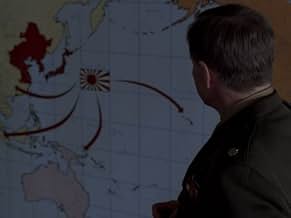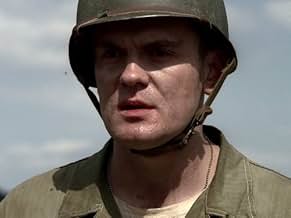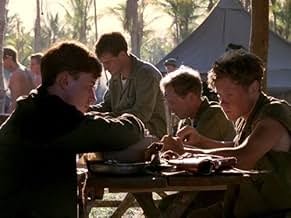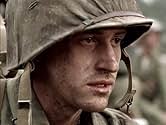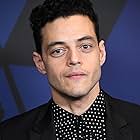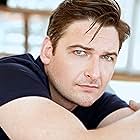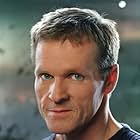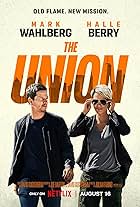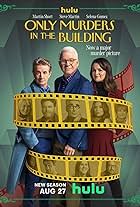The Pacific Theatre of World War II, as seen through the eyes of several young Marines.The Pacific Theatre of World War II, as seen through the eyes of several young Marines.The Pacific Theatre of World War II, as seen through the eyes of several young Marines.
- Won 8 Primetime Emmys
- 36 wins & 44 nominations total
Browse episodes
Storyline
Did you know
- TriviaDuring his audition, Rami Malek (Snafu) noticed that the man running the camera was not, as is typical, a young assistant, but an older gentleman who was doing some "very elegant camera work." Midway through his scene, he realized that the camera operator was actually Steven Spielberg.
- GoofsAt about 1:20 into the opening credits, a Navy ship sails into view from the left. On the bow is a small vertical mast (the jackstaff) flying a small flag (the Jack). The Jack and jackstaff are only used when the ship is anchored or moored never when it is underway.
- ConnectionsFeatured in The 62nd Primetime Emmy Awards (2010)
Featured review
Please, for the love of God, please do not overlook this miniseries. I have seen way too many people who don't bother to see The Pacific because it wasn't like Band of Brothers. This was in no way, shape, or form meant to be like BoB. If you have studied WW2 at all, you would know that the war in the Pacific was a totally different war than the European theater.
I loved Band of Brothers, it was a great and realistic series of the harsh realities of warfare and the scars it can leave. The Pacific was much harder to watch than BoB ever was. BoB was all about the bonds formed in combat and how this can tear people apart. This grim series displayed how completely unprepared the US military was mentally for how truly horrific this war would be. Not only were you fighting the unpredictable and relentless Japanese soldiers, but you were also fighting the terrain. The dense woods, the heavy rain, the thick mud. Not to mention all the diseases that came with these harsh conditions. Water was a luxury in a lot of situations. The filmmakers brilliantly showed how this affected the fighting men, who became virtually hollow shells, their sanity teetering on the edge of their knives.
The Japanese killed everyone without remorse. One particular scene that gave me chills to witness was in the latter half of the series when a group of civilians was slaughtered by a Japanese machine gun nest while running to the American forces. One person, a child, started to crawl slowly to the lines, a couple bullet wounds on his body. One of the combat rookies wanted to run in to help the poor boy, but was kept back so they would not be shoot too. All the Marines could do was watch, as the helpless child was brutally killed after a bullet from that machine gun emplacement hit him in the back of the head and his body went limp instantaneously.
This is on par with Saving Private Ryan, another collaboration between Tom Hanks and Steven Spielberg, as one of the most horrific, gruesome, and realistic war dramas ever put to film. I highly recommend giving it a watch, but be warned: this series is not for the faint of heart.
I loved Band of Brothers, it was a great and realistic series of the harsh realities of warfare and the scars it can leave. The Pacific was much harder to watch than BoB ever was. BoB was all about the bonds formed in combat and how this can tear people apart. This grim series displayed how completely unprepared the US military was mentally for how truly horrific this war would be. Not only were you fighting the unpredictable and relentless Japanese soldiers, but you were also fighting the terrain. The dense woods, the heavy rain, the thick mud. Not to mention all the diseases that came with these harsh conditions. Water was a luxury in a lot of situations. The filmmakers brilliantly showed how this affected the fighting men, who became virtually hollow shells, their sanity teetering on the edge of their knives.
The Japanese killed everyone without remorse. One particular scene that gave me chills to witness was in the latter half of the series when a group of civilians was slaughtered by a Japanese machine gun nest while running to the American forces. One person, a child, started to crawl slowly to the lines, a couple bullet wounds on his body. One of the combat rookies wanted to run in to help the poor boy, but was kept back so they would not be shoot too. All the Marines could do was watch, as the helpless child was brutally killed after a bullet from that machine gun emplacement hit him in the back of the head and his body went limp instantaneously.
This is on par with Saving Private Ryan, another collaboration between Tom Hanks and Steven Spielberg, as one of the most horrific, gruesome, and realistic war dramas ever put to film. I highly recommend giving it a watch, but be warned: this series is not for the faint of heart.
Details
- Release date
- Countries of origin
- Official site
- Language
- Also known as
- Untitled World War II Pacific Theater Project
- Filming locations
- Production companies
- See more company credits at IMDbPro
- Runtime53 minutes
- Color
- Sound mix
- Aspect ratio
- 1.78 : 1
Contribute to this page
Suggest an edit or add missing content





